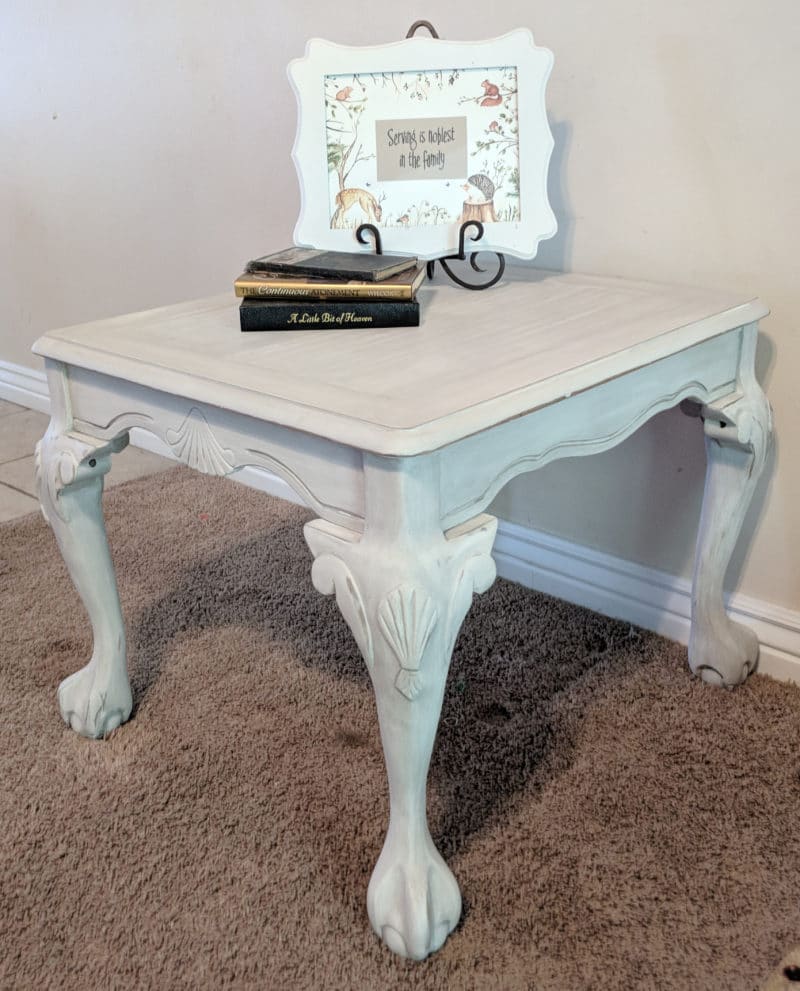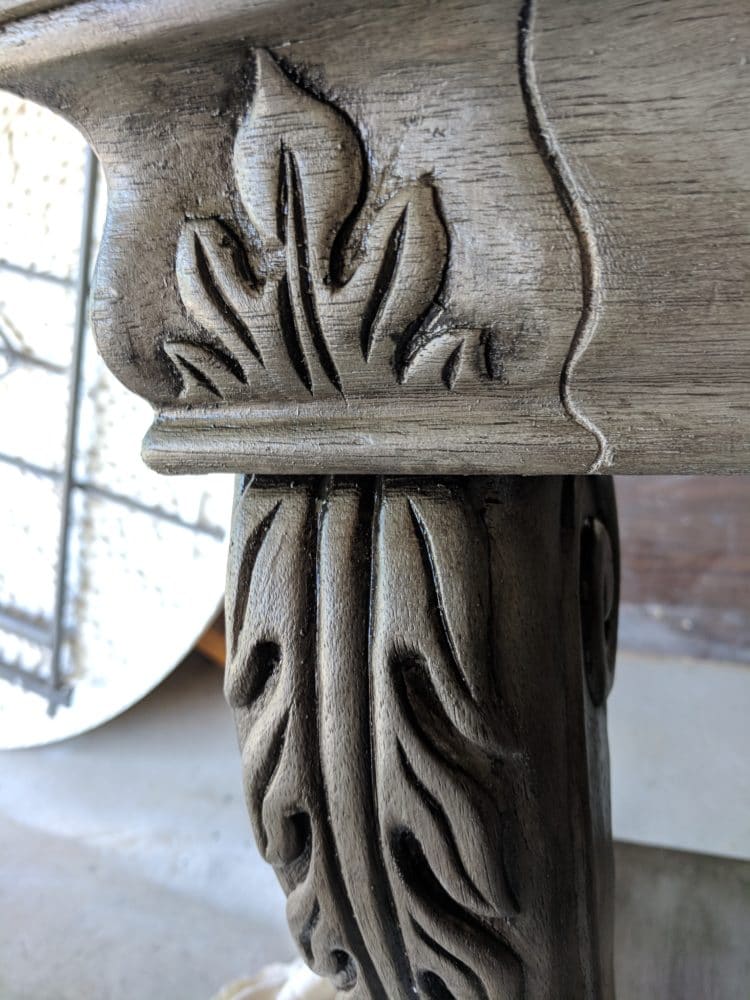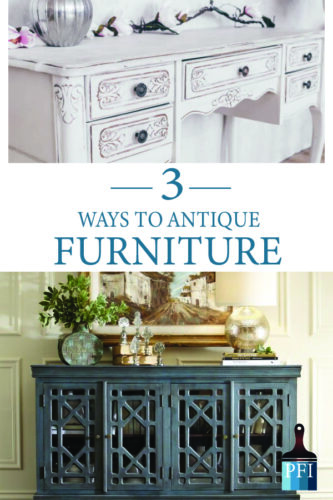There are a few different techniques you can use to give your painted furniture piece an antique look. Here are 3 of the most common ways:

1. Paint – Distress – Stain–
This process involves doing the basic painting process of priming your piece, then painting with your choice of color. Once the paint has fully dried (not just dry to the touch but 3 days kind of dry) then hand sand the edges to lightly sand the edges down to the wood. If you use an electric sander you will rub off more than you want, and if the paint isn’t fully dry you will start to peel off large amounts of paint.
The next step is to stain what you just sanded. Using a small cotton cloth, rub on your preferred stain color and then quickly wipe it away with a clean cloth. Our paint color will change slightly. On my white table it made it look too dark for my taste and so after I stained, I sanded it lightly to remove stain and draw out more white. When staining over other colors, just note that they will be slightly darker. Wipe the stain of within seconds to keep the color as close to the true color. Finish it off with a final clear coat for extra protection.

2. Paint – Dark Wax-
The second most popular technique to antique furniture is using dark wax over a painted piece. This technique involves painting the piece as usual and allowing it to dry completely. Then afterward rub on a dark tinted wax over the whole piece, especially the details and beveled edges. Wipe away the dark wax so that it is mostly left in the cracks and crevices of the piece. The dark wax will give your piece an overall darker look, as the wax will adhere to your paint coat as well as the edges. The great thing about this method is the wax is a protective coating, so there is no need for a final clear coat.
3. Paint – Dark Glaze

Similar to the antiqued technique listed before is the option of doing a dark glaze mixture after your normal paint job. So, instead of wiping on dark wax, you would apply a glaze mixture that is half dark or black paint and half glaze mixture with a few drops of water added to thin it.
Remember that with glaze, it dries VERY quickly so you need to work fast to wipe away the excess glaze. If you wait too long, you may have to go back and sand away the glaze and go over it again. This method would require that you finish your piece with a final clear coat.
There are pros and cons to using each of these antiqued techniques. The one that is probably easiest for you is one that you already have some experience with.

If glazing sounds like a good option for you, check out this article for more details: How to Glaze Cabinets Correctly







